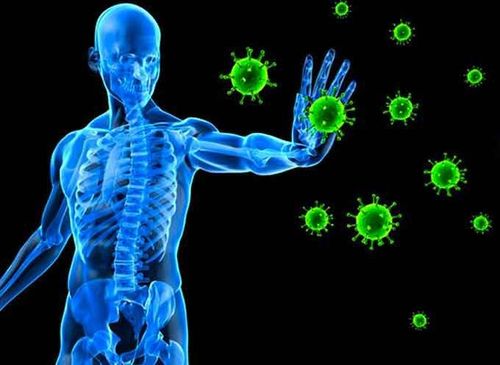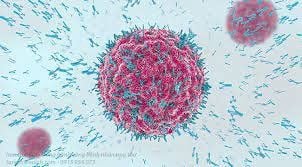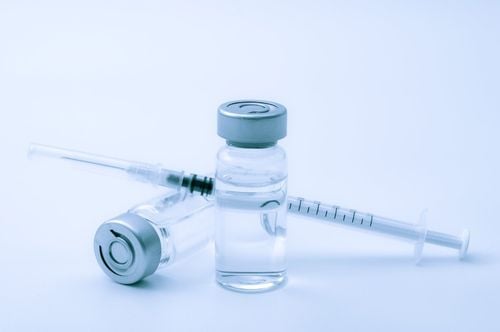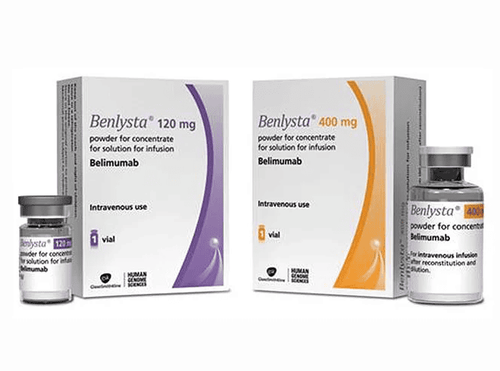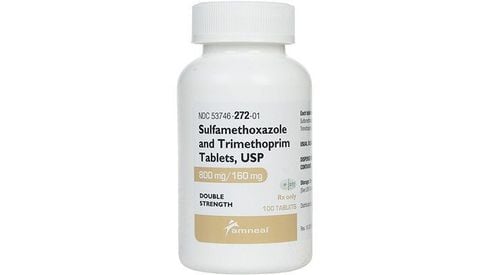This is an automatically translated article.
The article is professionally consulted by doctors of Internal Oncology Department, Vinmec Times City International General Hospital.The immune system is essential for life, without the immune system, the body will be easily attacked by bacteria, viruses, parasites, etc.. the immune system keeps us healthy when exposure to pathogens. The immune system is located throughout the body and involves many types of cells, organs, proteins, and tissues. It is important that the immune system be able to distinguish the body's own tissue from foreign tissue. Dead or damaged cells are also recognized and eliminated by the immune system.
1. Some key cells in the immune system
1.1. White blood cells White blood cells, also known as white blood cells. White blood cells circulate in blood vessels and lymphatic vessels parallel to veins and arteries. White blood cells patrol constantly and look for pathogens. When they see a target, they begin to multiply and send signals to other types of cells. White blood cells are stored in lymphatic organs, including:
Thymus - a gland between the lungs and just below the neck. Spleen - an organ that filters the blood, located in the upper left side of the abdomen. Bone marrow – located in the center of bones, produces red blood cells. Lymph nodes - Small glands throughout the body, linked by lymphatic vessels. There are two main types of white blood cells: Type 1: Macrophages
These cells effectively surround and absorb pathogens and break down, ingesting them. There are several types, including:
Neutrophils - this is the most common type of phagocytosis and tends to attack bacteria. Monocytes - this is the largest type and has several roles. Macrophages - track down pathogens, while removing dead cells. Mastocytes - help heal wounds and fight pathogens. Type 2: Lymphocytes
Lymphocytes help the body remember previous illnesses and recognize if they return to attack again.
Lymphocytes are born in the bone marrow. Some stay in the marrow and develop into B lymphocytes, others go to the thymus and become T lymphocytes. These two types of cells have different roles:
B lymphocytes - make antibodies, also warn T lymphocytes. T lymphocytes - destroy damaged cells in the body, and warn other white blood cells. 1.2. White blood cells The immune system warns the body from foreign diseases, by detecting proteins on the surface of all cells, and ignoring proteins on their own or at an early stage.
Antigen is any cause of an immune response. In many cases, antigens are bacteria, fungi, viruses, or toxins that have entered from the outside, but it can also be one of the body's own faulty cells (such as cancer cells) or cells. died.
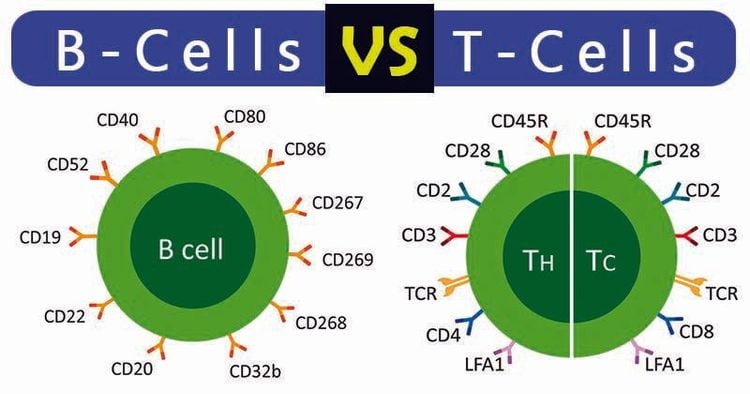
Tế bào lympho B và tế bào lympho T
2. The role of cells
2.1. Role of B lymphocytes When B lymphocytes detect antigens, they begin to secrete antibodies.
Antibodies are special proteins that block antigens.
Each B cell produces a specific antibody. For example, one cell may make an antibody against the bacteria that causes pneumonia, and the other cell may recognize the common cold virus.
Antibodies are part of a group of chemicals called immunoglobulins, which play many roles in the immune response:
Immunoglobulin G (IgG) - marks bacteria so other cells can recognize and deal with them they. IgM - kills bacteria. IgA - gathers in fluids, such as tears and saliva, that protect the entrance to the body. IgE - fights parasites and also causes allergies. IgD - maintains binding to B lymphocytes, helps initiate an immune response. Antibodies bind to antigens, but do not destroy, but only mark.
The killing is the job of other cells, such as phagocytes.
2.2. Role of T lymphocytes There are different types of T lymphocytes:
Helper T cells (helper T lymphocytes) - coordinate immune responses. Some communicate with other cells, and some stimulate B cells to produce more antibodies. Others attract more T cells or cell-eating phagocytes.
Killer T cells (cytotoxic T lymphocytes) - as the name suggests, these T cells attack other cells, which are particularly useful against viruses. They work by recognizing small parts of the virus on the outside of infected cells and killing the infected cells.
3. Immune System
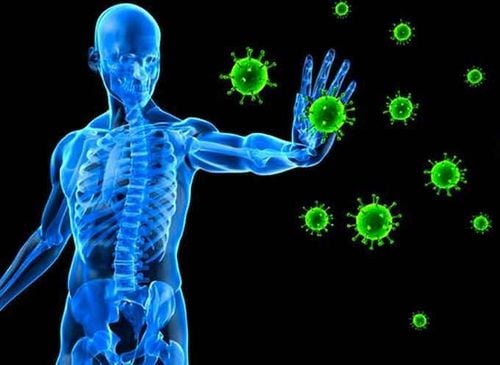
Hệ miễn dịch trở nên mạnh mẽ hơn khi trưởng thàn nên hthanh thiếu niên và người lớn có xu hướng bị bệnh ít hơn trẻ em
Everyone's immune system is different, but as a general rule, the immune system becomes stronger as we mature, to this point when we have been exposed to many pathogens and develop immunity more than.
That's why adolescents and adults tend to get sick less often than children.
Once an antibody has been made, a copy remains in the body so that if the same antigen reappears, it can be processed more quickly.
That's why with some diseases, such as chickenpox, you only get infected once because the body has a stored chickenpox antibody, ready and waiting to destroy if the disease invades again . This is called immunity.
There are three types of immunity in humans called innate immunity, adaptive immunity and
passive immunity:
Innate immunity We are all born with some degree of immunity to external diseases outside. The human immune system, like that of many animals, attacks foreign pathogens. This innate immunity includes our bodies' external barriers - the first line of defense against pathogens - such as the skin and mucous membranes of the throat and intestines.
If pathogens try to evade the innate immune system, adaptive or passive immunity will occur.
Active immunity When we are exposed to disease or vaccinated, we build a library of antibodies to different pathogens. This is sometimes called immunological memory because our immune system remembers previous pathogens.
Passive Immunity This immunity is "borrowed" from another source, but does not last indefinitely. For example, a baby receives antibodies from the mother through the placenta before birth and in breast milk after birth. This passive immunity protects the baby from certain infections during the first years of life.
4. The problem of vaccination creates the immune system
Immunization introduces attenuated antigens or pathogens to a person who is not personally ill but still produces antibodies. Because the body keeps copies of the antibodies, it is protected if the threat reappears later in life.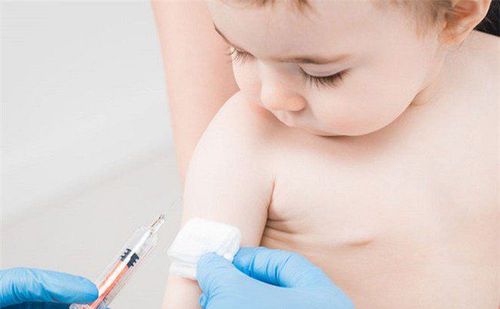
Tiêm chủng giúp tạo ra kháng thể bảo vệ con người trước các mối đe dọa và mầm bệnh
5. Immune system disorders
Because the immune system is so complex, it sometimes misbehaves. Immune disorders fall into three categories:
Immunodeficiency Occurs when one or more parts of the immune system fail to function. Immunodeficiency can be caused by a number of factors, including age, obesity, and alcoholism. In developing countries, malnutrition is a common cause. AIDS is an example of acquired immunodeficiency.
In some cases, immunodeficiency can be inherited, for example, in metastatic cancer, chronic granulomatosis, where phagocytosis does not function properly.
Autoimmune diseases In autoimmune conditions, the immune system mistakenly targets healthy cells, rather than foreign pathogens or faulty cells. At this time, the body's immune system can no longer distinguish which of its own and which come from outside. Autoimmune diseases include celiac disease, type 1 diabetes, rheumatoid arthritis, and Graves' disease.
Hypersensitivity The immune system overreacts damaging healthy tissues. An example is anaphylaxis in which the body reacts to an allergen so strongly that it can be life-threatening.
The immune system is extremely complex and vital to our survival. Several systems and different types of cells work in perfect sync (most of the time) throughout the body to fight pathogens and clear away dead cells.
Autologous immunotherapy is researched and put into application to help strengthen the body's immune system to prevent and destroy cancer cells. The process of enhancing the autologous immune system by acquiring natural immune cells in the body and toxic T cells from the patient's blood. Next, grow and activate these cells in the laboratory. Finally, transfer back to the patient's body. These natural killer immune cells, once introduced into the body, automatically destroy cancer cells.
Cancer treatment with autologous immunotherapy offers many opportunities to prolong life for people with cancer. This is a successful therapy in Japan and developed countries around the world.
In Vietnam, Vinmec Times City International Hospital is the first hospital licensed by the Ministry of Health to perform this treatment technique. Some common cancers such as liver cancer, lung cancer, breast cancer, colorectal cancer... are all cancers that can metastasize and can be successfully treated with this therapy.
During cancer treatment with autologous immunotherapy, it is possible to combine treatment with traditional cancer treatments (radiotherapy, surgery, chemotherapy, gene therapy)... more successful results.
Please dial HOTLINE for more information or register for an appointment HERE. Download MyVinmec app to make appointments faster and to manage your bookings easily.
Article referenced source: Medical News Today



